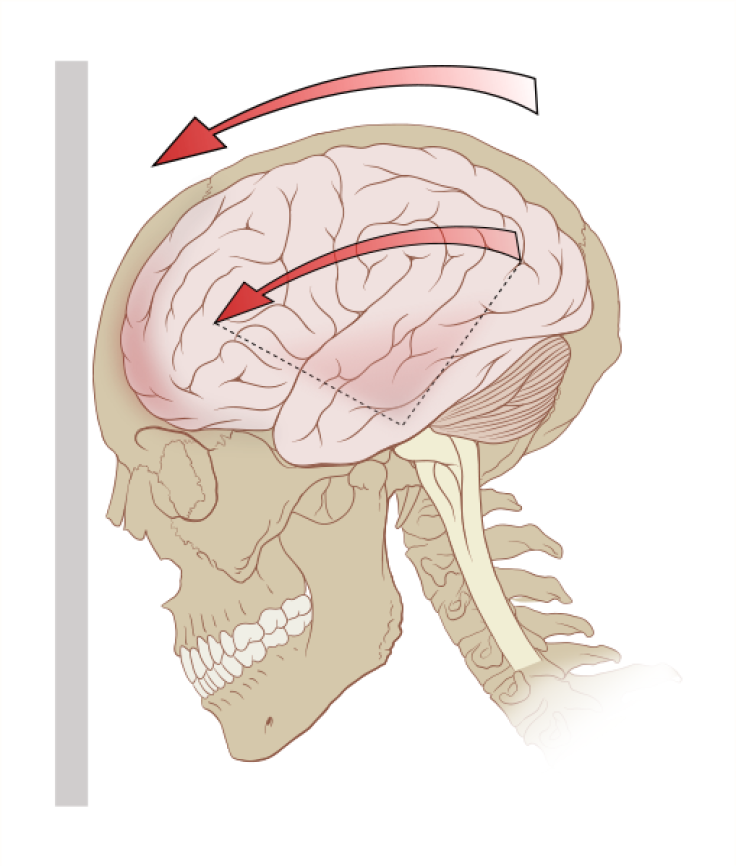New Technology Uses Wireless Signals To Diagnose Traumatic Brain Injury

New technology is using wireless signals to provide real-time, noninvasive diagnoses of brain swelling or bleeding. The device analyzes data from low-energy electromagnetic waves, similar to the kind used to transmit radio and mobile signals.
"Our goal is inexpensive medicine for Mexico," said Boris Rubinsky, a professor at UC Berkeley's Department of Mechanical Engineering. He led the research team along with César A. González, a professor at the Instituto Politécnico Nacional, Escuela Superior de Medicina (National Polytechnic Institute's Superior School of Medicine) in Mexico. The authors noted that in Mexico, 40.7 percent of the population is lacking access to health services; medical imaging in particular is not available to over 60 percent of the world population.
"There are large populations in Mexico and the world that do not have adequate access to advanced medical imaging, either because it is too costly or the facilities are far away," said González.
The researchers tested a prototype in a small-scale pilot study of healthy adults and brain trauma patients admitted to a military hospital for the Mexican Army. The study involved 46 healthy adults, ages 18 to 48, and eight patients with brain damage, ages 27 to 70. The results from the healthy patients were clearly distinguishable from those with brain damage, and data for bleeding was distinct from those for swelling. Although the device can determine if a certain medical condition has occurred - for instance, is there internal bleeding after childbirth? has a child injured the brain after a fall? - the technology does not give the degree of the disease or the location of brain bleeding. It is not, then, a replacement for medical imaging, but a diagnostic tool to tell if medical imaging is needed or not.
"We have built a technology that will cost about as much as a blood pressure meter," said Rubinsky. "Our assumption is that if a poor child falls and hits their head in a rich industrialized country, the parents will immediately take the child to a major hospital. In poor areas, where the hospital is hours by car, the parent may just wait. Same thing about internal bleeding from child birth."
The engineers fashioned two coils into a helmet-like device, fitted over the heads of the study participants. One coil acts as a radio emitter and the other serves as the receiver. Electromagnetic signals are broadcast through the brain from the emitter to the receiver. The researchers wrote that design goals necessitated the device be robust, inexpensive, and simple to use.
"We have adjusted the coils so that if the brain works perfectly, we have a clean signal," said Rubinsky. "Whenever there are interferences in the functioning of the brain, we detect them as changes in the received signal. We can tell from the changes, or 'noises,' what the brain injury is."
Rubinsky noted that the waves are extremely weak, and are comparable to standing in a room with the radio or television turned on.
The device's diagnoses for the brain trauma patients in the study matched the results obtained from conventional computerized tomography (CT) scans.
"We have also shown that the technology could be combined with cell phones for remote diagnostics," said Gonzalez.
The researchers took advantage of the characteristic changes in tissue composition and structure in brain injuries. For brain edemas, swelling results from an increase in fluid in the tissue. For brain hematomas, internal bleeding causes the buildup of blood in certain regions of the brain. Because fluid conducts electricity differently than brain tissue, it is possible to measure changes in electromagnetic properties. Computer algorithms interpret the changes to determine the likelihood of injury.
To focus their ideas, the researchers developed the technology for the detection of edema, hemorrhage and hematomas, and ischemia, though at no point did they rule out the possibility of other applications, such as detection of tumors, infections, brain degeneration, internal bleeding, and maternal hemorrhage. Indeed, their tests also revealed some insight into the aging brain.
"With an increase in age, the average electromagnetic transmission signature of a normal human brain changes and approaches that of younger patients with a severe medical condition of hematoma in the brain," said González. "This suggests the potential for the device to be used as an indication for the health of the brain in older patients in a similar way in which measurements of blood pressure, ECG, cholesterol or other health markers are used for diagnostic of human health conditions."
Described in the May 14 issue of the journal PLOS ONE, the technology could potentially become a cost-effective tool for medical diagnostics and to triage injuries in areas where access to medical care, especially medical imaging, is limited. Developed at UC Berkeley, three patents on the technology have been issued to the University already.
Source González, CA, Rubinsky, B, et al. Volumetric Electromagnetic Phase-Shift Spectroscopy of Brain Edema and Hematoma. PLOS One. Accessed May 14, 2013.



























